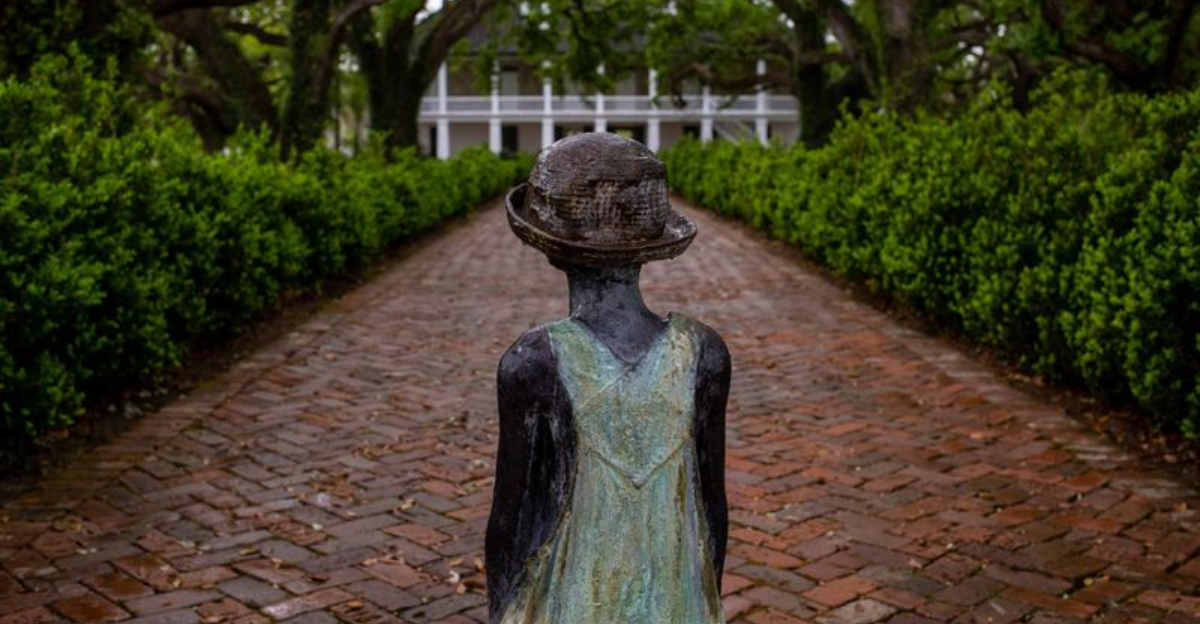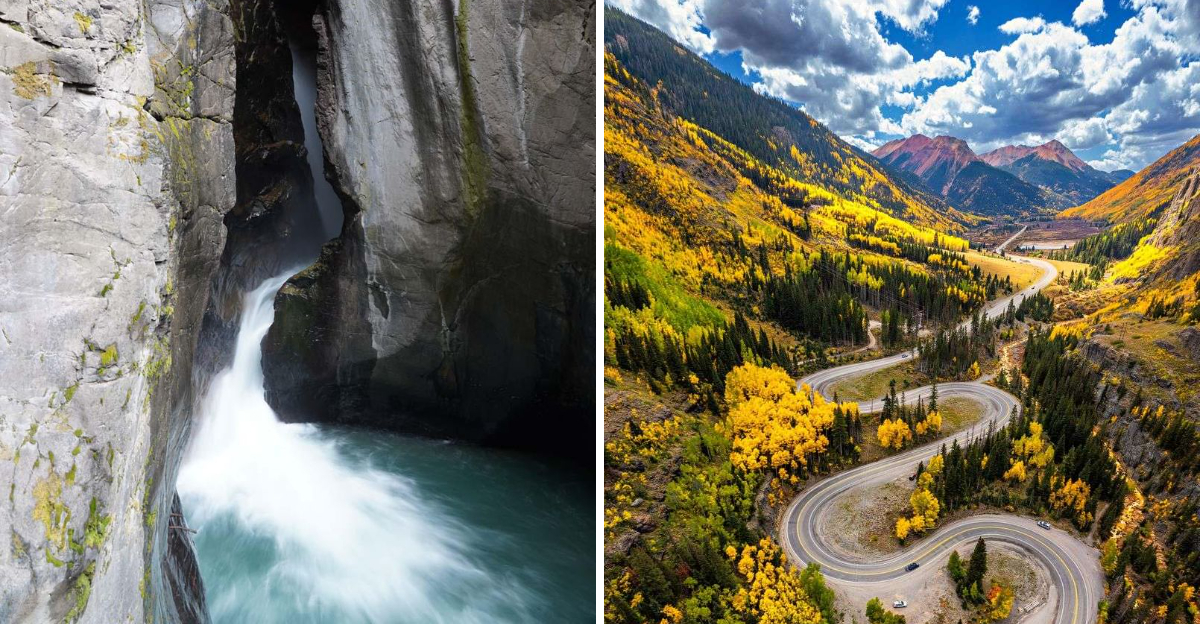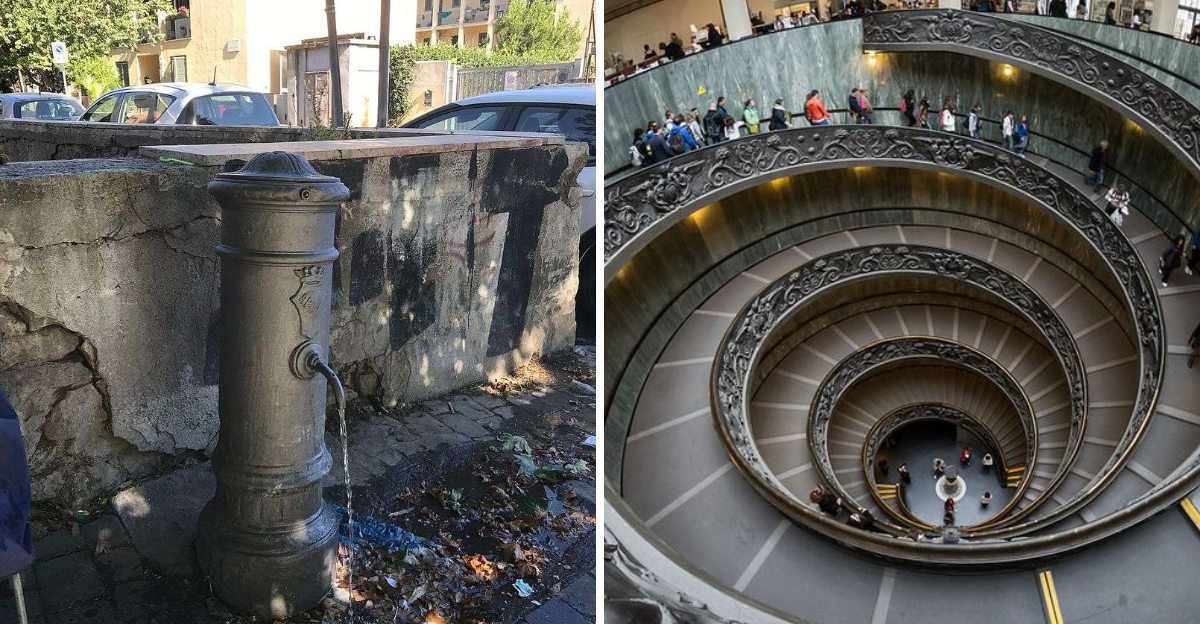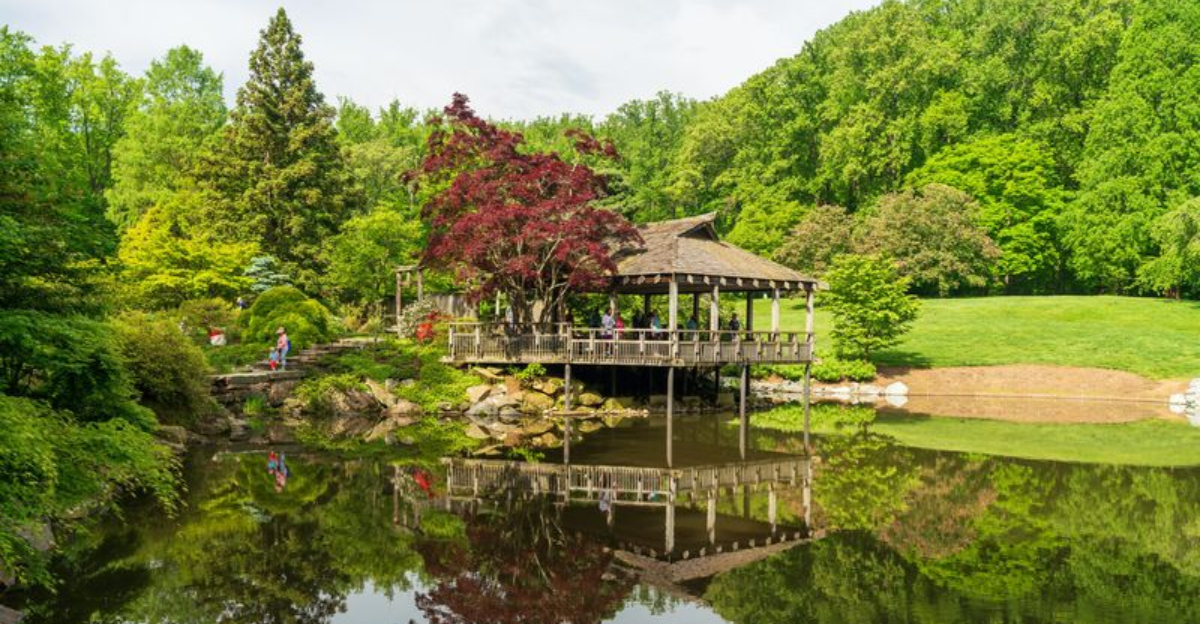Inside California’s 41-Foot Beacon That Became An Unlikely Pilgrimage Site
Standing proud at the entrance to Santa Cruz Harbor, the Walton Lighthouse has transformed from a simple navigational aid into something much more special.
This 41-foot white tower with its distinctive green lantern room has captured the hearts of visitors and locals alike.
The beacon’s accessible location on a jetty surrounded by crashing waves and marine life has turned it into one of Central California’s most photographed landmarks.
1. A Modern Lighthouse With Old-World Appeal
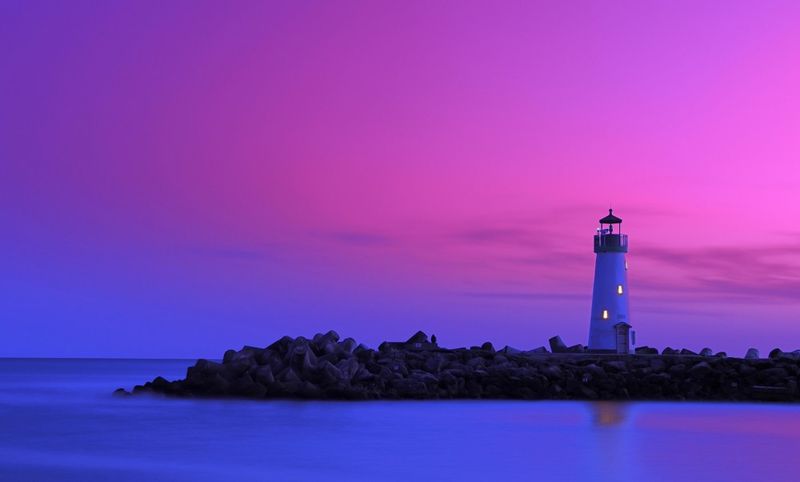
Built in the modern era and officially named the Santa Cruz Harbor Lighthouse, this beacon serves dual purposes as both functional navigational aid and photogenic landmark.
The cylindrical tower rises from massive protective boulders at the harbor’s western jetty entrance, named after Derek Walton, a sailor whose family contributed significantly to its construction.
Its distinctive light pattern, one white flash every four seconds, guides vessels through Monterey Bay while creating dramatic compositions that photographers can’t resist, especially at dusk when the beam cuts through coastal fog.
2. The Jetty Walk Changes Everything
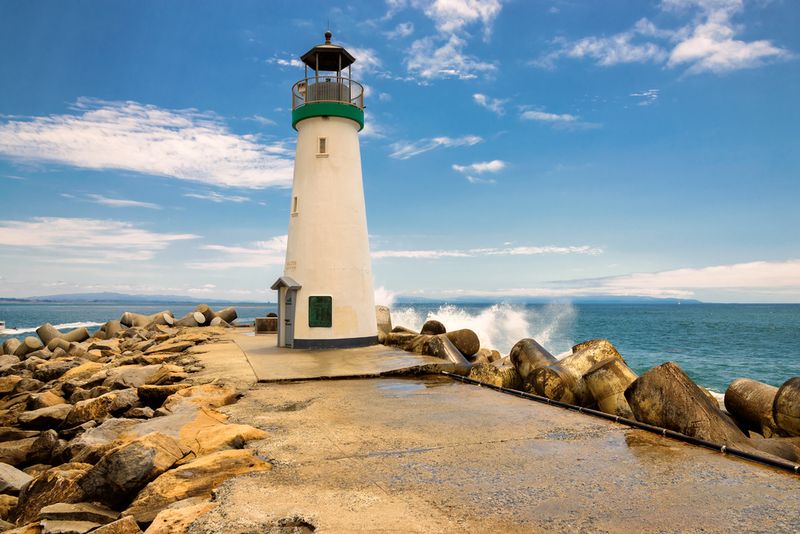
Unlike remote lighthouses perched on inaccessible cliffs, Walton welcomes visitors via a walkable concrete path flanked by protective rocks.
The half-mile journey offers evolving views of the bustling harbor on one side and Monterey Bay on the other, where seabirds wheel overhead and waves crash against boulders.
Wildlife encounters rival the destination itself, sea lions bark from nearby buoys, harbor seals surface curiously, and migration seasons bring gray whales and humpbacks within viewing distance, while the base of the lighthouse provides space for picnicking, fishing, or simply absorbing the scene.
3. When Light Transforms The Scene
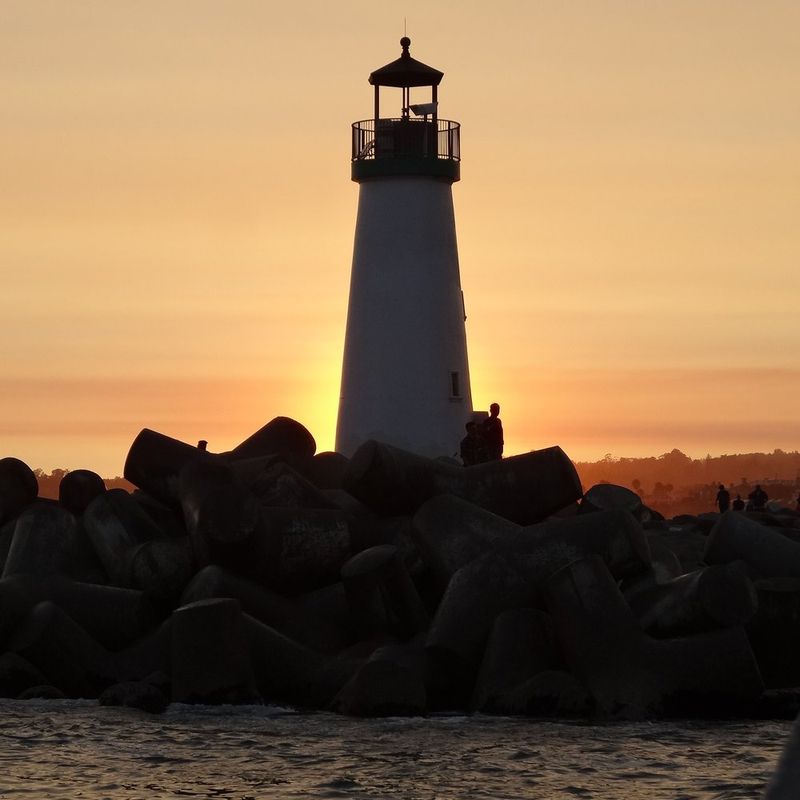
The lighthouse reveals different personalities throughout the day. Dawn brings soft pastels illuminating the white tower, while midday clarity creates stark contrast against blue sky.
Sunset bathes the structure in golden light that justifies every superlative photographers throw at it. Foggy days, common on the Central California coast, showcase the lighthouse at its most authentic, with the beam cutting through mist exactly as designed.
Early mornings or weekday visits offer relative solitude, while summer weekends bring crowds that fill harbor parking quickly. Comfortable shoes with good traction are essential, as rocks around the lighthouse can be slippery from spray.
4. Santa Cruz Beyond The Beacon
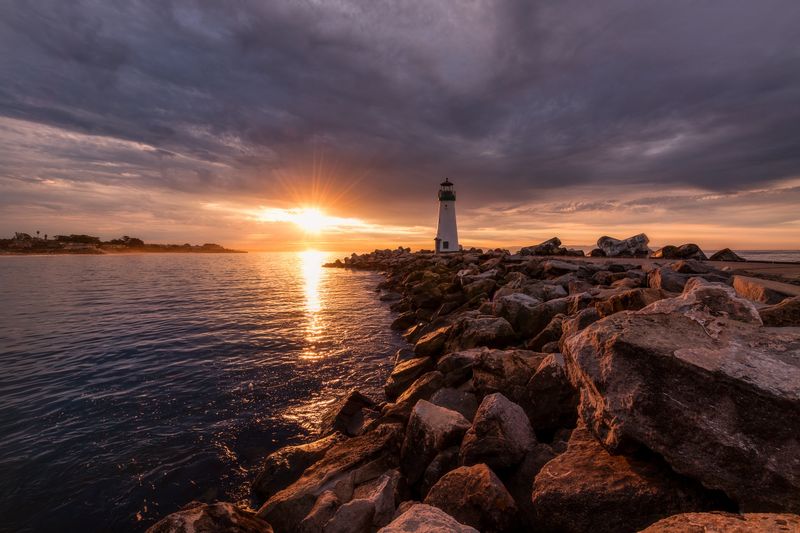
The harbor area surrounding the lighthouse offers cafes, shops, and opportunities to watch fishing boats depart at dawn or sea lions lounging on docks.
Nearby Santa Cruz provides complementary experiences from the Surfing Museum to seafood restaurants serving catches pulled from waters visible from the lighthouse. Accommodations range from luxury oceanfront hotels to charming bed and breakfasts for those wanting to experience the lighthouse at multiple times of day.
For kayakers and paddleboarders, launching from the harbor and circling the lighthouse provides the sailor’s perspective, watching the tower’s presence grow as distance closes, understanding the reassurance it offers approaching vessels.
The area also attracts anglers catching rockfish, lingcod, and seasonal salmon from the jetty rocks.
5. Planning The Perfect Visit
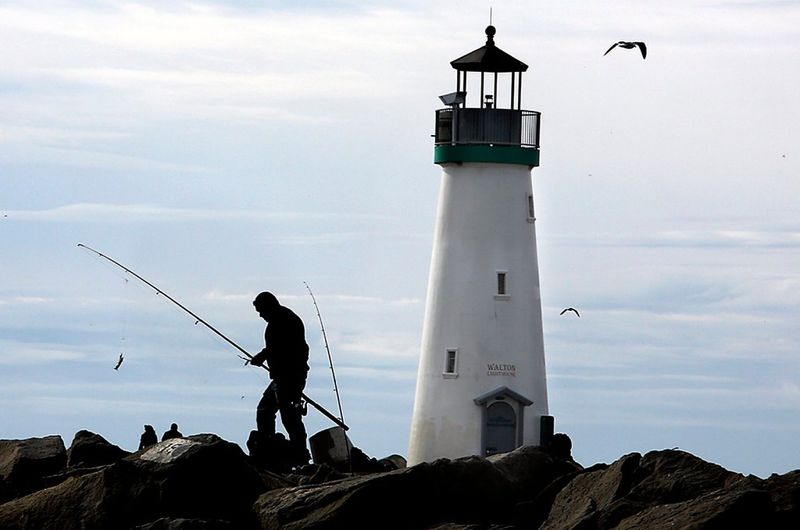
Arriving an hour before sunset offers optimal timing for the walk out and finding ideal viewing spots. A light jacket helps even in summer when coastal breezes chill, and bringing a picnic enhances the experience.
The lighthouse itself remains closed to visitors as a working navigational aid, but the surrounding area provides ample space for contemplation and photography.



